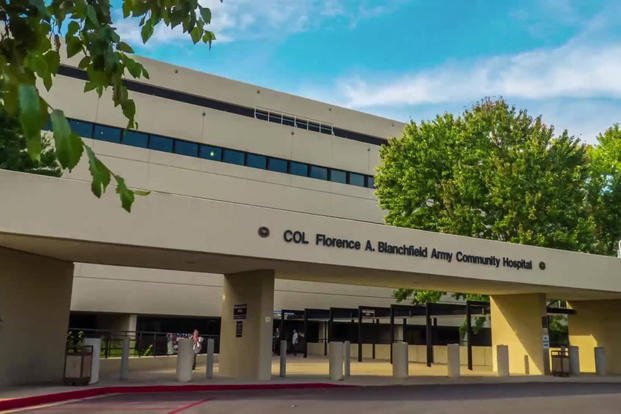Editor's Note: This story was corrected to reflect the accurate number of veterans who will be served by the Fort Campbell VA Clinic. A VA press release on the new facility provided data on the number of veterans residing in the region, not the clinic's capacity.
The Department of Veterans Affairs on Friday announced the opening of its newest health clinic -- a facility inside Blanchfield Army Community Hospital at Fort Campbell, Kentucky, which could serve up to 3,000 veterans in that state and Tennessee.
The facility is the second co-located with a Defense Department hospital, a partnership the VA said could expand its footprint by 13 more facilities at military bases in the U.S.
Fort Campbell and Clarksville, Tennessee, have the largest and most rapidly expanding veteran population in the region, with more than 21,000 former service members currently enrolled in VA health care and an additional 29,100 who are eligible, according to the VA.
Read Next: Vets Say Weight Loss Drugs Have Improved Their Health, But New Patients Are Out of Luck
Over the next three years, the VA plans to establish three new outpatient clinics to serve veterans from these areas, as well as Cookeville and Nashville, Tennessee.
"The median age of our VA hospitals is nearly 60 years, and so while we are working to modernize them, we are also doing things simultaneously like these partnerships to make sure we are supporting veterans with the right facilities at the right place at the right time in the right part of the country," Al Montoya, the VA deputy assistant under secretary for health for operations, said during a press call with reporters Thursday.
The VA and DoD have more than 176 sharing agreements in place at facilities and jointly operate the Capt. James Lovell Federal Health Care Center in North Chicago, Illinois. The latest round of partnerships began in October at Naval Hospital Pensacola, where the VA maintains a clinic and has an agreement to share operating room space.
In the coming months, the VA plans to formally open a clinic at the Air Force's 6th Medical Group Sabal Park Clinic in Tampa, part of MacDill Air Force Base's health system.
At Fort Campbell, eligible veterans should have access to dental care, women's health services, intensive care and pain management, according to VA officials. Fifteen VA employees and 10 Fort Campbell staff members will provide care and services to the vets.
Since 2017, the Defense Department has launched reforms to focus the services' medical commands on care for military personnel while managing medical services for family members and retirees under the umbrella of Tricare, the DoD's private health program, or in military treatment facilities, depending on location or availability.
As part of those reforms, the Defense Department announced in 2020 that it would downsize its medical facilities system, making 38 facilities available only to active-duty military personnel, downsizing four hospitals and closing three clinics, including the Sabal Park site in Tampa.
That plan was expected to send at least 200,000 retirees and military family members to the private sector for care.
The reforms were introduced to curb costs and focus military medicine on care for military personnel in garrison and combat operations.
The plan backfired, however. In a memo issued last December, Deputy Defense Secretary Kathleen Hicks said the realignment and "ambitious private-sector care capacity assumptions" led to chronically understaffed military treatment facilities in which providers weren't able to sustain their skills or deliver timely care.
At Walter Reed National Military Medical Center in Bethesda, Maryland, for example, the daily patient load dropped by 43% last year.
To address the problems, Hicks announced a plan to bring at least 7% of military health care beneficiaries back into military hospitals by the end of 2026.
"Our provider force, both civilian and military, has shrunk too much, risking the hollowing of our [military health system]. ... The situation has been years in the making based on assumptions that aren't true," Dr. Lester Martinez-Lopez, the assistant secretary of defense for health affairs, said during a federal health care conference in Oxon Hill, Maryland, this month.
The DoD has announced partnerships in numerous locations to ensure that its clinicians can keep up their skills. Numerous military treatment facilities have become trauma centers in their locations, taking civilian patients who need acute emergency care.
Montoya said that the veterans who go to clinics like the Fort Campbell facility will be seen by VA staff, but if there are other resources offered, VA patients may have opportunities to be seen in military specialty clinics.
"It really has that menu of opportunities for our veterans to be seen in many cases by the VA; in other cases, vice versa. It's a two-way street," Montoya said.
In a statement, Martinez-Lopez said that the arrangement will not affect quality or access to care for DoD beneficiaries.
"Not only does it provide increased opportunities to care for those who have sacrificed so much for this country, but it helps our medical professionals maintain their readiness skills. It is a win-win for all those involved," Martinez-Lopez said.












